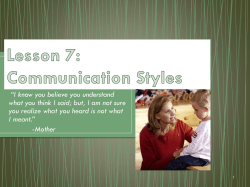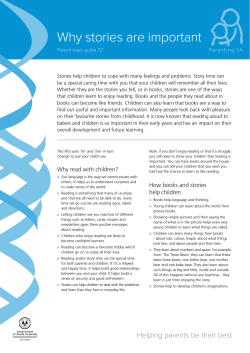
Using Phenomenology: Understanding group dynamics. EDUC867 Research Methodology Presentation
Using Phenomenology: Understanding group dynamics. EDUC867 Research Methodology Presentation By Jia Fei January, 2010 My Study Design Understanding Group Dynamics: Examining the influence of proximity and contact on group interaction. o Objective: My study intends to understand and describe students’ individual experience in group interaction with respect to proximity and contact. o Research Paradigm--Interpretivism I am not seeking for objective truth in group interaction. Instead, I am interested in how students interpret their experience in group interaction. Especially, how students’ feelings and motivations are affected by factors like proximity and contact? o Methodology chosen – Phenomenology Overview of phenomenology o Definition: “Phenomenology is an approach which attempts to understand the hidden meanings and the essence of an experience together with how participants make sense of these.” (Grbich 2007, p. 84). o Strengths: Phenomenology is used to explore, describe, document rich details of people’s experiences, especially changes in feelings and experiences over time. o Epistemological position -- Interpretivism. Husserl : Experience is the source of all knowledge. o Common Research methods: In-depth Interview as well as observation and documentation. Key Authors/Texts/Studies Key Authors: o Edmund Husserl; Martin Heidegger; Jean-Paul Sartre ; Maurice Merleau-Ponty; Max van Manen Key Texts/Studies: o Husserl, E. (1999) The idea of phenomenology. Dordrecht, Boston : Kluwer Academic. o Heidegger, M. (2005) Introduction to phenomenological research. Bloomington : Indiana University Press. o Moustakas, C. (1994) Phenomenological Research Methods. Thousand Oaks, CA: Sage. o Geelan, D. & P. Taylor. (2001). Writing our lived experience: beyond the (pale) hermeneutic? Electronic Journal of Science Education. 5 (4). o Trujillo, J. (2004) An existential phenomenology of crack cocaine abuse. Janus Head. 7(1). 167-187. Key Concepts and Blind Spot o Epoche -Bracketing To put aside presuppositions and start with an open, unbiased mind to understand the phenomenon through the informants’ eyes. The process is called phenomenological reduction. o Intentionality: “Direction of experience towards things in the world” (Gribch 2007, p.85), the property of consciousness. Blind Spot o Debate on the possibility and indispensability of phenomenological reduction (bracketing). o Bracketing is difficult to do in practice and unclear to judge its completeness. Why use phenomenology I. Objective of the study: To understand personal experience and feelings II. Methodology choice: Phenomenology III. Data Collection Methods: Observation & individual Interview IV. Data Analysis Methods: Phenomenological Analysis •My study is focused on participants’ interpretations of their experiences and feelings. Phenomenology with a focus on individual feelings can allow me to see the group dynamics through the participants’ voices. •Based on common phenomenological methods, I will collect data via individual interviews and videotaped observation. The latter will allow me look into participants’ experience and help them recall details (their feelings, actions, etc ) of their experiences. •My data analysis is based on phenomenological analysis procedures: a. Start with bracketing; b. Analysis of specific statements and themes; c. A search for all possible meanings by intuition, imagination and universal structures. (Miller & Salkind, 2002). Methodological Question o Which form of phenomenology is the most suitable for my study? (Existential phenomenology or transcendental phenomenology?) o If adopting existential phenomenology, how to deal with intersubjectivity? o How to “bracket” my prejudgments, beliefs and previous habit of thinking? How do I know if I have done a good job in bracketing? o Is it necessary to reflect my personal experience in group interaction? If yes, how do I connect it with informants’ descriptions?
© Copyright 2025




















